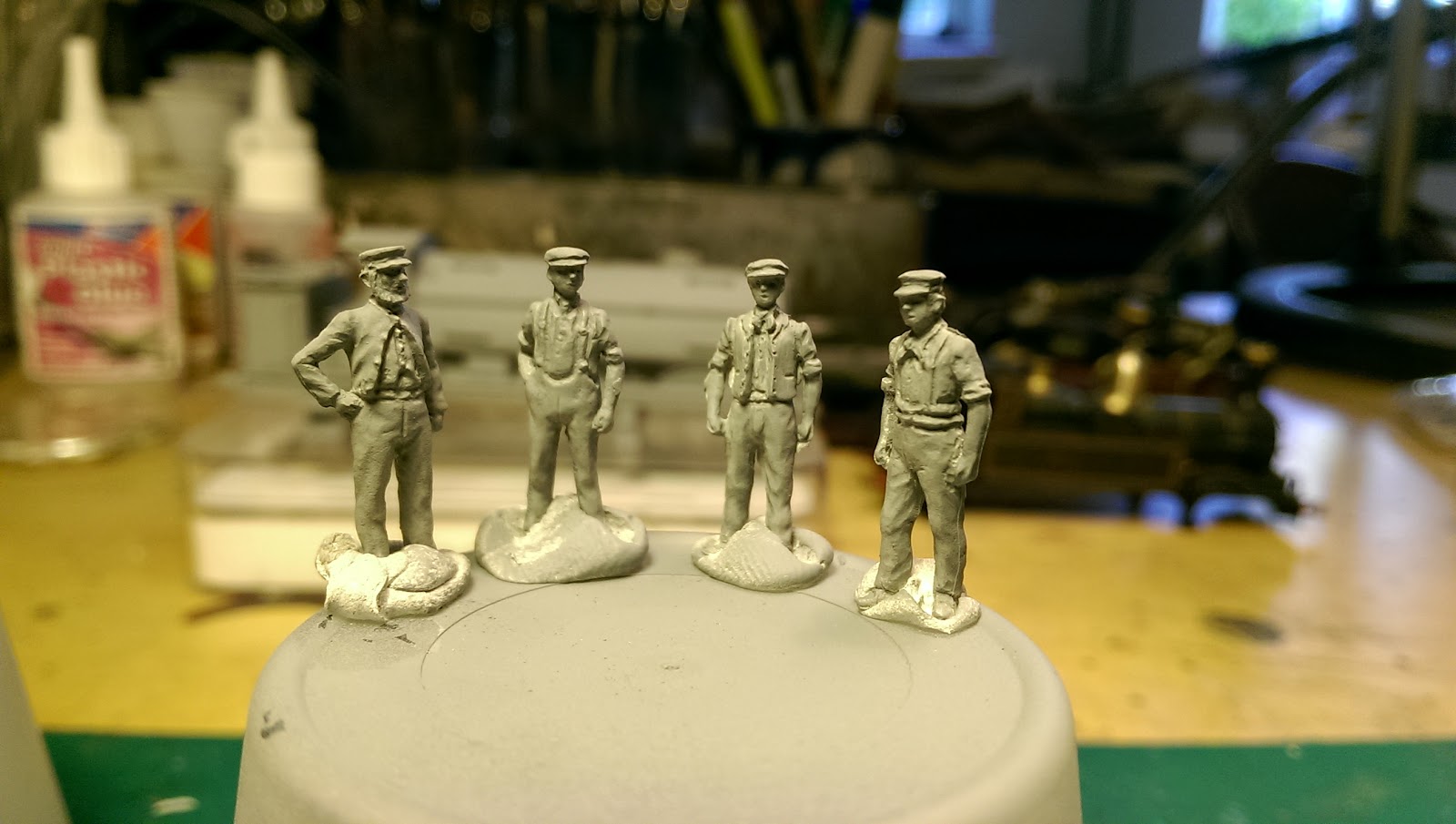Line dance, 4mm style. I’ve been painting some figures from Andrew Stadden’s excellent new range of Edwardian 4mm figures.
A batch in primer, showing the detail of the figures.
Being pewter, the Stadden figures are a little harder to modify than whitemetal ones. It’s not impossible though. This gent had his bag removed…
… making him look more like a railway employee. I sometimes file the caps to represent the GWR kepi, although photos from the 1900s suggest that in practice, several different types of cap could be seen at the same time during this period.
I still struggle with figure painting. In particular I can't seem to master that illusive shadow-work - but it helps a lot that the figures are so well modelled.
On most of the figures, the close-fitting headwear conveniently hides the upper face, which I find particularly hard to get right. This is driver J. Chuzzlewit, a seasoned man of the footplate and known for his rough driving, poor jokes, and fanatical interest in leeks.
Here we have GWR Policeman W. Walmsley of the GWR Goods Department at Farthing. This figure was modified from a guard/inspector. It required a bit of research since little has been written about GWR police uniforms. My theory is that in the 1900s the GWR police force had lost much of its former status, and the main distinguishing marks on their uniforms were a gold patch on one sleeve, and brass numerals on the collar. Later (possibly in 1918), they started wearing helmets. For more info, see this thread on RMweb.
Detective F. Benton of the GWR Detective Department at Paddington. The GWR seem to have had a separate Detective department from quite early on. Considering the total value of goods being handled by the railway, that’s not really surprising. I’m sure there was a scam or two going on!
Stages of undress. What’s the weather like today? And what task is at hand? Miraculously, the temperature at Farthing always seems to be moderate, which is why some staff wear a coat, others wear vests, and the hard-working men only a shirt.
I’ve decided that this trio will serve as Slipper boys in the GWR goods department at Farthing. Slipper boys, as I understand it, would assist horse shunters with tasks such as “scotching” wheels and handling the horse’s chains. Clothes mattered a lot in Edwardian days, and photos suggest that even non-uniformed, lower staff grades could be smartly dressed. Even so, a couple of these lads look very smart indeed. Is there something fishy going on? Watch this space...









